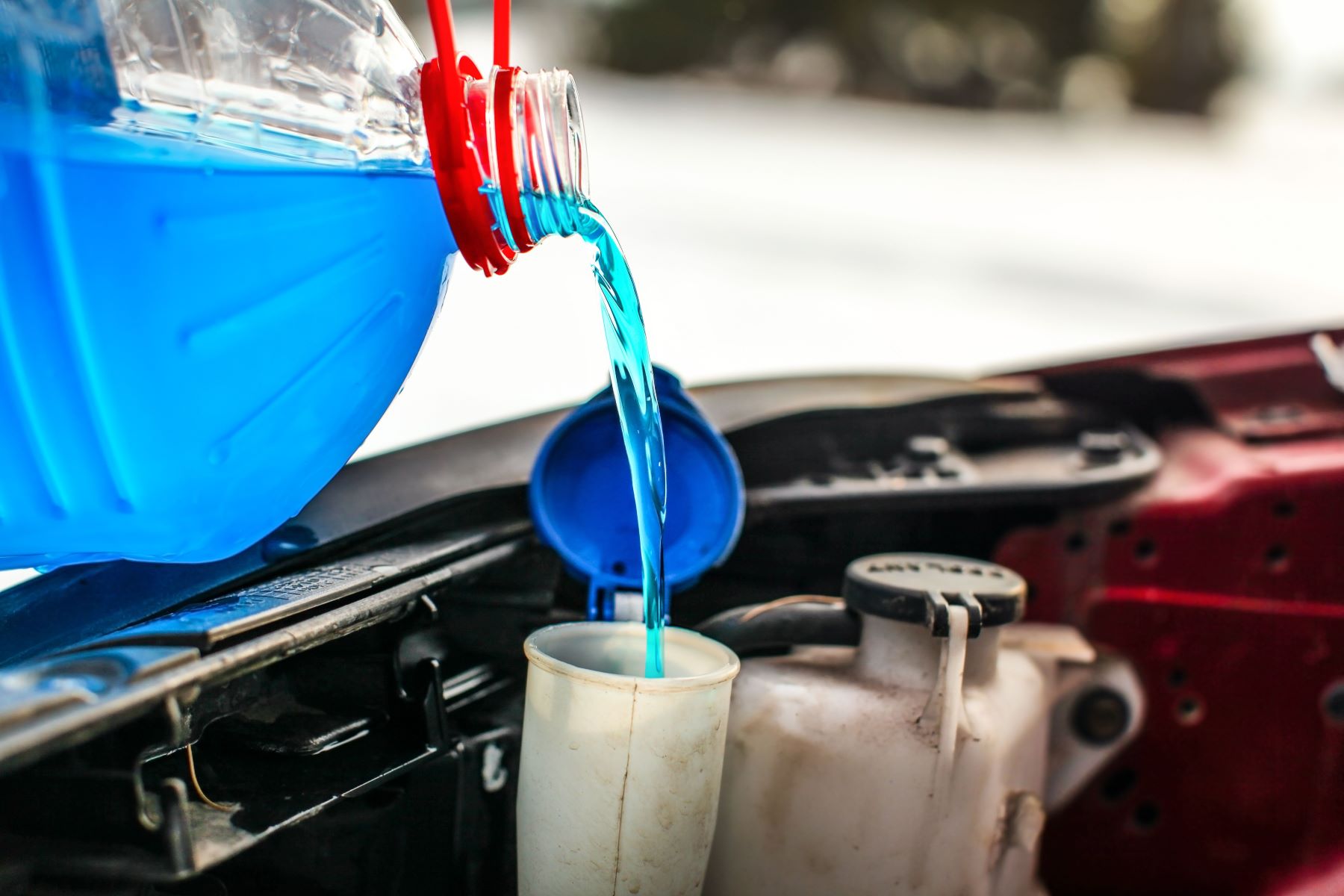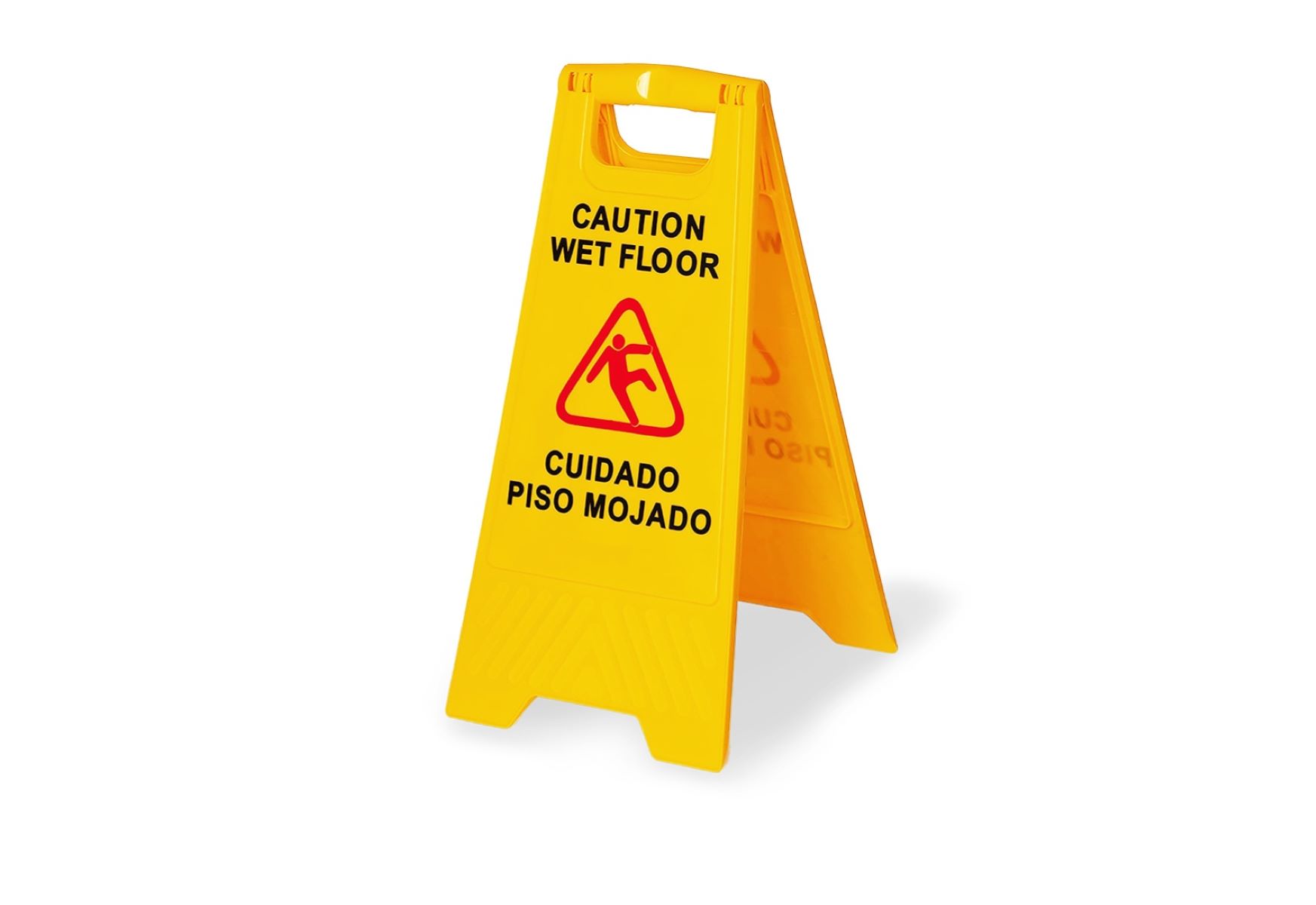Home>Health and Wellness>The Hidden Dangers Of Diatomaceous Earth For Pets: Walking Or Eating It Could Be Fatal!


Health and Wellness
The Hidden Dangers Of Diatomaceous Earth For Pets: Walking Or Eating It Could Be Fatal!
Published: February 9, 2024
Protect your pets' health and wellness by understanding the hidden dangers of diatomaceous earth. Walking or eating it could be fatal! Learn more.
(Many of the links in this article redirect to a specific reviewed product. Your purchase of these products through affiliate links helps to generate commission for Regretless.com, at no extra cost. Learn more)
Table of Contents
Introduction
Diatomaceous earth, commonly known as DE, is a natural product used for various purposes, including pest control, filtration, and even as a dietary supplement for humans. While it is generally considered safe for use around the home, there are hidden dangers associated with diatomaceous earth, especially when it comes to pets. Many pet owners are unaware of the potential risks that diatomaceous earth poses to their beloved furry companions. This article aims to shed light on the lesser-known hazards of diatomaceous earth for pets, particularly when it is ingested or comes into contact with their skin or paws.
It's crucial for pet owners to be aware of the potential dangers of diatomaceous earth, as accidental exposure can lead to serious health issues for their pets. By understanding the risks and learning how to prevent diatomaceous earth poisoning, pet owners can take proactive measures to safeguard the well-being of their furry friends. In the following sections, we will delve into the specifics of what diatomaceous earth is, how it can harm pets, the symptoms of diatomaceous earth poisoning, appropriate treatment, and most importantly, how to prevent accidental poisoning in the first place. Let's explore the hidden dangers of diatomaceous earth for pets and learn how to keep our furry companions safe from harm.
What is Diatomaceous Earth?
Diatomaceous earth (DE) is a naturally occurring, soft, sedimentary rock that is easily crumbled into a fine white to off-white powder. It is composed of the fossilized remains of diatoms, which are tiny, single-celled algae with hard, silica-based shells. These microscopic diatoms lived in bodies of water millions of years ago, and their accumulated remains formed the deposits of diatomaceous earth found today.
There are two main types of diatomaceous earth: food-grade and filter-grade. Food-grade diatomaceous earth is considered safe for consumption by humans and animals, as it is typically untreated or heat-treated to remove impurities. It is commonly used in food storage, agricultural applications, and even as a natural insecticide for pest control. On the other hand, filter-grade diatomaceous earth is used for industrial filtration purposes and is not safe for human or animal consumption due to its high crystalline silica content, which can be harmful when inhaled.
Diatomaceous earth is known for its abrasive and absorbent properties, making it a popular natural pesticide and insecticide. When insects come into contact with diatomaceous earth, its abrasive nature can damage their exoskeletons, leading to dehydration and death. Therefore, it is often used as a non-toxic method of controlling pests in gardens, homes, and agricultural settings.
In addition to its pest control applications, diatomaceous earth is also used in water filtration, as it effectively removes impurities and contaminants from liquids. Its porous structure and high surface area make it an excellent filtration medium for purifying water and other liquids in industrial and environmental settings.
Overall, diatomaceous earth is a versatile and widely used natural product with diverse applications, ranging from pest control and filtration to its potential use as a dietary supplement. However, despite its beneficial uses, it is important to be aware of the potential risks associated with diatomaceous earth, especially when it comes to the safety of our beloved pets. Understanding the nature of diatomaceous earth is essential in recognizing how it can pose a threat to pets and taking preventive measures to ensure their well-being.
How Diatomaceous Earth Can Harm Pets
Diatomaceous earth, while widely used for its beneficial properties, can pose significant risks to pets when not handled with caution. The abrasive nature of diatomaceous earth, particularly food-grade DE, can cause irritation and dryness when it comes into contact with a pet's skin, leading to discomfort and potential skin issues. Additionally, the fine powder can be easily inhaled by pets, causing respiratory distress and irritation to the lungs and airways.
One of the most concerning dangers of diatomaceous earth for pets is the potential for ingestion. When pets, particularly cats and dogs, ingest diatomaceous earth, it can lead to a range of health issues. The abrasive particles in diatomaceous earth can cause damage to the delicate tissues of the digestive tract, leading to irritation, inflammation, and potential blockages. Moreover, the high silica content in filter-grade DE can be harmful when ingested, as it may lead to respiratory issues and gastrointestinal discomfort.
Furthermore, if pets consume diatomaceous earth that has been used for pest control, they may inadvertently ingest toxic substances that were targeted at insects. This can result in poisoning and adverse reactions in pets, further exacerbating the potential harm caused by diatomaceous earth.
Another way diatomaceous earth can harm pets is through direct contact with their paws or fur. When pets walk through areas where diatomaceous earth has been applied, the fine particles can adhere to their paws and fur, leading to skin irritation and potential ingestion when they groom themselves. This can result in discomfort, skin inflammation, and the ingestion of diatomaceous earth, compounding the risks to their health.
In summary, the abrasive nature of diatomaceous earth, its potential for respiratory irritation when inhaled, and the risks associated with ingestion pose significant dangers to pets. Understanding these risks is crucial for pet owners to take proactive measures to protect their furry companions from potential harm. By being aware of how diatomaceous earth can harm pets, pet owners can implement preventive strategies to ensure the safety and well-being of their beloved animals.
Symptoms of Diatomaceous Earth Poisoning in Pets
Recognizing the symptoms of diatomaceous earth poisoning in pets is crucial for early intervention and prompt veterinary care. When pets are exposed to diatomaceous earth, whether through ingestion, inhalation, or skin contact, they may exhibit a range of symptoms indicating potential poisoning. These symptoms can vary depending on the type and extent of exposure, as well as the individual pet's sensitivity to the substance.
Respiratory Distress
Pets that inhale diatomaceous earth may experience respiratory distress, manifested by coughing, wheezing, or labored breathing. The fine particles of diatomaceous earth can irritate the delicate tissues of the respiratory tract, leading to discomfort and breathing difficulties. Additionally, pets may exhibit signs of nasal discharge or sneezing, indicating irritation of the nasal passages and sinuses.
Gastrointestinal Disturbances
Ingestion of diatomaceous earth can lead to gastrointestinal disturbances in pets, including vomiting, diarrhea, and abdominal discomfort. The abrasive nature of diatomaceous earth can cause irritation and inflammation of the digestive tract, resulting in symptoms such as nausea, excessive salivation, and reluctance to eat or drink.
Skin Irritation
Pets that come into direct contact with diatomaceous earth may develop skin irritation, characterized by redness, itching, and potential dermatitis. The abrasive particles of diatomaceous earth can cause dryness and irritation of the skin, leading to discomfort and potential secondary skin issues if not addressed promptly.
Lethargy and Weakness
In more severe cases of diatomaceous earth poisoning, pets may exhibit signs of lethargy, weakness, and a general lack of energy. This could be indicative of systemic effects resulting from exposure to diatomaceous earth, including potential toxicity and the body's physiological response to the substance.
Oral and Paw Irritation
Pets that have ingested diatomaceous earth or come into contact with it through their paws may display signs of oral irritation, such as excessive drooling or pawing at the mouth. Additionally, licking or grooming behavior in response to paw irritation can lead to further ingestion of diatomaceous earth, exacerbating the potential harm to pets.
Neurological Symptoms
In rare cases of severe diatomaceous earth poisoning, pets may exhibit neurological symptoms, including tremors, seizures, or disorientation. These symptoms indicate a more serious reaction to diatomaceous earth and necessitate immediate veterinary attention.
It is important for pet owners to be vigilant and observe their pets for any unusual symptoms or behaviors following potential exposure to diatomaceous earth. Early recognition of these symptoms can facilitate timely intervention and appropriate veterinary care, ensuring the well-being and safety of pets in the event of diatomaceous earth poisoning.
Treatment for Diatomaceous Earth Poisoning
The treatment for diatomaceous earth poisoning in pets varies depending on the type and severity of exposure. When a pet shows symptoms of diatomaceous earth poisoning, it is crucial to seek immediate veterinary care to address the potential health risks and mitigate the effects of exposure.
In cases of respiratory distress resulting from inhalation of diatomaceous earth, supportive care may be necessary to alleviate breathing difficulties and reduce respiratory irritation. This can include providing oxygen therapy, administering bronchodilators to open the airways, and monitoring the pet's respiratory function to ensure adequate oxygenation.
For pets that have ingested diatomaceous earth, the treatment approach focuses on addressing gastrointestinal disturbances and potential toxicity. Veterinary intervention may involve inducing vomiting to remove the ingested diatomaceous earth from the pet's system, followed by administering activated charcoal to bind any remaining toxins and prevent their absorption in the digestive tract. Fluid therapy may also be initiated to maintain hydration and support the pet's overall health during the recovery process.
In cases where pets exhibit skin irritation or dermatitis due to direct contact with diatomaceous earth, topical treatments and soothing ointments may be recommended to alleviate discomfort and promote skin healing. Bathing the pet with mild, pet-safe shampoos can help remove residual diatomaceous earth from the fur and skin, reducing the risk of further irritation and ingestion through grooming behavior.
In more severe instances of diatomaceous earth poisoning, where pets display neurological symptoms or systemic toxicity, intensive veterinary care and monitoring are essential. This may involve hospitalization, intravenous fluid therapy, and supportive measures to address the pet's specific symptoms and stabilize their condition.
It is important for pet owners to communicate all relevant information about the pet's exposure to diatomaceous earth to the veterinary care team, including the type of exposure, duration, and any observed symptoms. This enables the veterinarians to tailor the treatment approach to the individual pet's needs and provide the most effective care.
Overall, prompt veterinary intervention and appropriate treatment are paramount in managing diatomaceous earth poisoning in pets. By seeking professional veterinary care and following the recommended treatment protocols, pet owners can help their furry companions recover from potential diatomaceous earth exposure and minimize the associated health risks.
Preventing Diatomaceous Earth Poisoning in Pets
Preventing diatomaceous earth poisoning in pets is paramount for ensuring their safety and well-being. By taking proactive measures and implementing preventive strategies, pet owners can significantly reduce the risk of accidental exposure to diatomaceous earth and mitigate the potential dangers it poses to their furry companions.
-
Secure Storage and Application: Store diatomaceous earth products, especially those intended for pest control, in secure, inaccessible locations that are out of reach of pets. When applying diatomaceous earth in the home or garden, ensure that pets are kept away from the treated areas during and immediately after application to prevent direct contact and ingestion.
-
Use Pet-Safe Alternatives: Consider utilizing pet-safe pest control methods and products as an alternative to diatomaceous earth, particularly in areas where pets frequent. There are numerous pet-friendly pest control options available that can effectively manage pests without posing risks to pets' health.
-
Appropriate Handling and Disposal: When handling diatomaceous earth, particularly filter-grade DE, use appropriate personal protective equipment such as gloves and masks to minimize exposure. After use, ensure thorough cleaning of surfaces to remove any residual diatomaceous earth, and dispose of unused or contaminated DE safely and responsibly.
-
Pet-Focused Application: If diatomaceous earth is used in areas where pets have access, such as outdoor spaces, apply it in a manner that minimizes the potential for pet exposure. This can include targeted application to specific pest-prone areas while avoiding open areas where pets roam freely.
-
Education and Awareness: Educate yourself and other household members about the potential risks of diatomaceous earth to pets, including the dangers of ingestion, inhalation, and skin contact. By raising awareness about these risks, everyone can be more vigilant in preventing accidental exposure to diatomaceous earth.
-
Consultation with Veterinarians: If there are concerns about using diatomaceous earth in a household with pets, seek guidance from veterinarians or pet care professionals. They can provide tailored advice on the safe use of diatomaceous earth and recommend alternative solutions to protect pets from potential harm.
By implementing these preventive measures and being mindful of the potential risks associated with diatomaceous earth, pet owners can create a safer environment for their pets and reduce the likelihood of diatomaceous earth poisoning. Proactive prevention is key to safeguarding the well-being of beloved pets and ensuring a pet-friendly living space free from potential hazards.
Conclusion
In conclusion, while diatomaceous earth has gained popularity for its versatile uses in pest control, filtration, and even as a dietary supplement, it presents hidden dangers to pets that cannot be overlooked. The abrasive nature of diatomaceous earth, coupled with its potential for respiratory irritation, gastrointestinal distress, and skin issues, underscores the need for pet owners to exercise caution and awareness when using this natural product in their homes and surroundings.
The risks of diatomaceous earth poisoning in pets, whether through ingestion, inhalation, or skin contact, necessitate a proactive approach to prevention and education. By understanding the potential harm that diatomaceous earth can pose to pets, pet owners can take steps to minimize the risks and create a safe environment for their furry companions.
Recognizing the symptoms of diatomaceous earth poisoning and seeking prompt veterinary care in the event of exposure are crucial for mitigating the potential health risks to pets. Furthermore, implementing preventive strategies, such as secure storage, pet-safe alternatives, and appropriate handling, can significantly reduce the likelihood of accidental pet exposure to diatomaceous earth.
It is essential for pet owners to be informed and proactive in safeguarding their pets from potential diatomaceous earth poisoning. By prioritizing pet safety and well-being, pet owners can create a pet-friendly living environment that is free from the hidden dangers of diatomaceous earth.
Ultimately, while diatomaceous earth can be an effective and natural solution for pest control and filtration, pet owners should exercise caution and mindfulness to ensure that their beloved pets are protected from potential harm. By being aware of the risks and taking proactive measures, pet owners can enjoy the benefits of diatomaceous earth while keeping their furry companions safe and healthy.
In the end, the well-being of our pets is paramount, and by understanding the hidden dangers of diatomaceous earth and taking appropriate preventive actions, pet owners can provide a safe and nurturing environment for their beloved animals.













